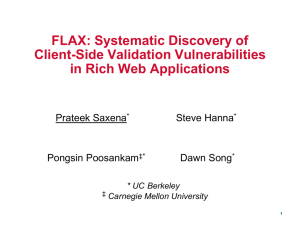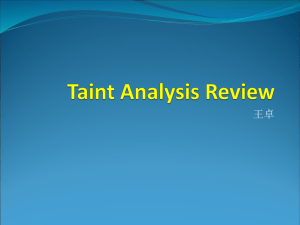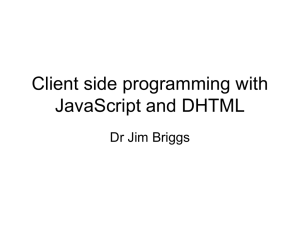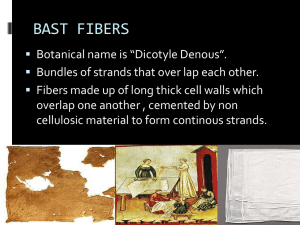FLAX: Systematic Discovery of Client-Side Validation Vulnerabilities
advertisement
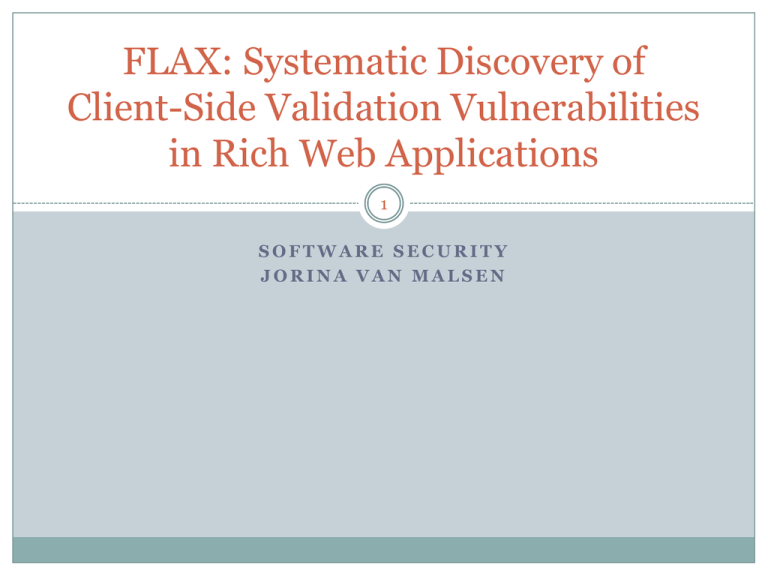
FLAX: Systematic Discovery of Client-Side Validation Vulnerabilities in Rich Web Applications 1 SOFTWARE SECURITY JORINA VAN MALSEN Client-Side Validation (CSV) Vulnerabilities 2 “A CSV vulnerability results from unsafe usage of untrusted data in the client-side code of the web application” CSV more common than ever due to the increased complexity of JavaScript applications FLAX 3 Tool to analyze a web application in an end-to-end manner, aimed to discover vulnerabilities in the clientside code The framework simplifies JavaScript analysis and explicitly models reflected flows and path constraints. Challenges: - Complexity of JavaScript - Parsing operations are syntactically indistinguishable from validation checks - Difficulties with the reflected flows Existing Approaches 4 Fuzzing/Black Box Testing Dynamic Taint-Tracking Symbolic Execution Techniques FLAX is a hybrid approach named a ‘taint enhanced blackbox fuzzing approach’ Attacks resulting from CSV Vulnerabilities 5 Origin Misattribution Arises because the application checks the domain field of the origin parameter insufficiently, though the protocol sub-field is correctly validated Code Injection Possible because JavaScript can dynamically evaluate both HTML and script code using various DOM methods as well as JavaScript native constructs (often referred to as DOM-based XSS) Command Injection Allows the attacker to perform unintended actions on behalf of the user. Cookie-Sink Vulnerabilities An attacker could, among others, fix the values of the session identifiers which may result in a session fixation FLAX Technical Challenges and Design Points 6 Modeling path constraints Improvement Saner by enabling FLAX to capture the validation checks as branch conditions Simplifying JavaScript By the use of JASIL Dealing with reflected flows This is done by testing the client-side code independently of the server-side cody by generating candidate inputs that make simple assumptions about the transformations occurring in reflected flows. Subsequently, the tool verifies the assumption by running the candidate attack concretely, and reports a vulnerability if the concrete test succeeds The System’s Architecture 7 The taint enhanced blackbox fuzzing algorithm consists of five steps at a high level: 1. 2. 3. 4. 5. Dynamic trace generation and conversion to JASIL Dynamic taint analysis Generate an acceptor slice Sink-aware random testing Verification of candidate inputs Evaluation FLAX 8 FLAX discovered several real-world bugs (incl. several iGoogle gadgets, websites and AJAX applications for instance) 11 of the founded vulnerabilities were unknown before, so it proves that the tool is a valuable resource for security analysts and developers of rich web applications The technique is light-weight compared to symbolic execution techniques, has no false positives and is scalable enough to use on real-world applications
